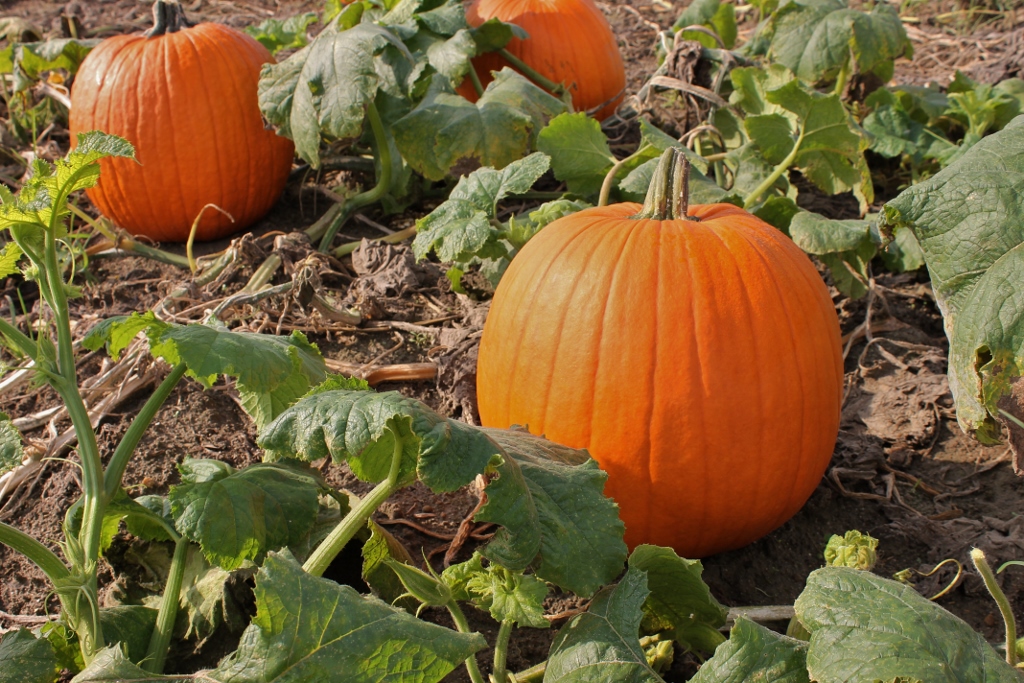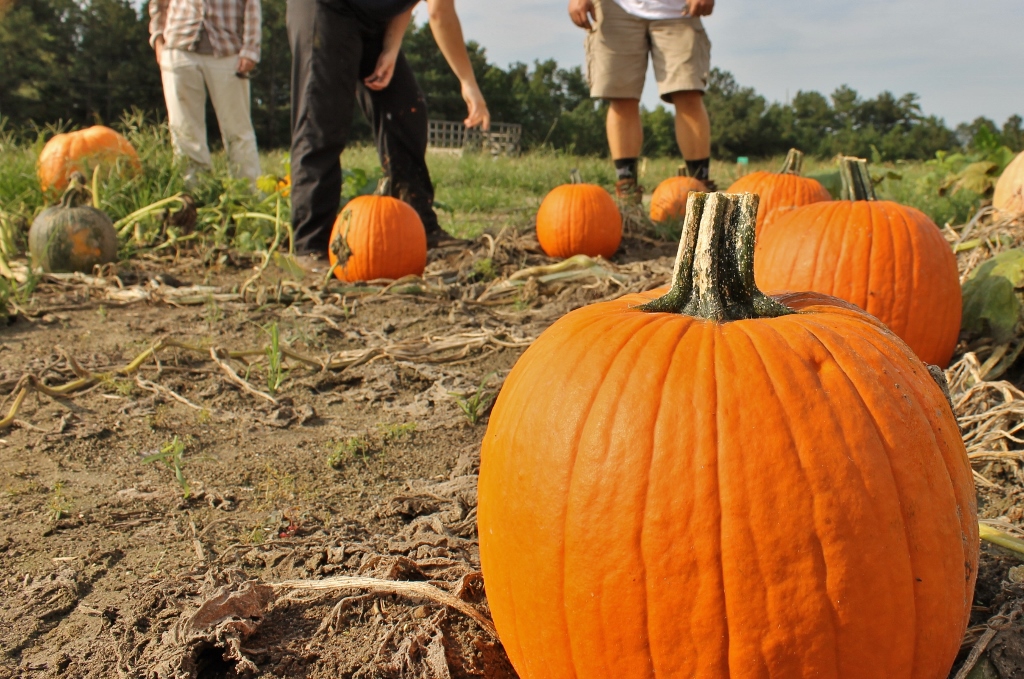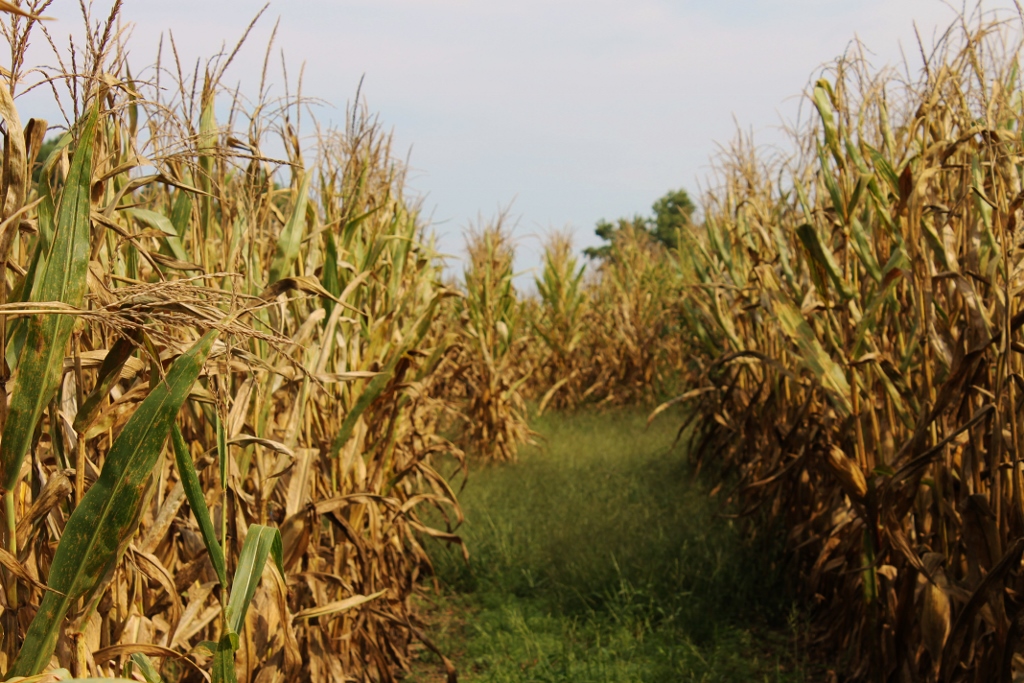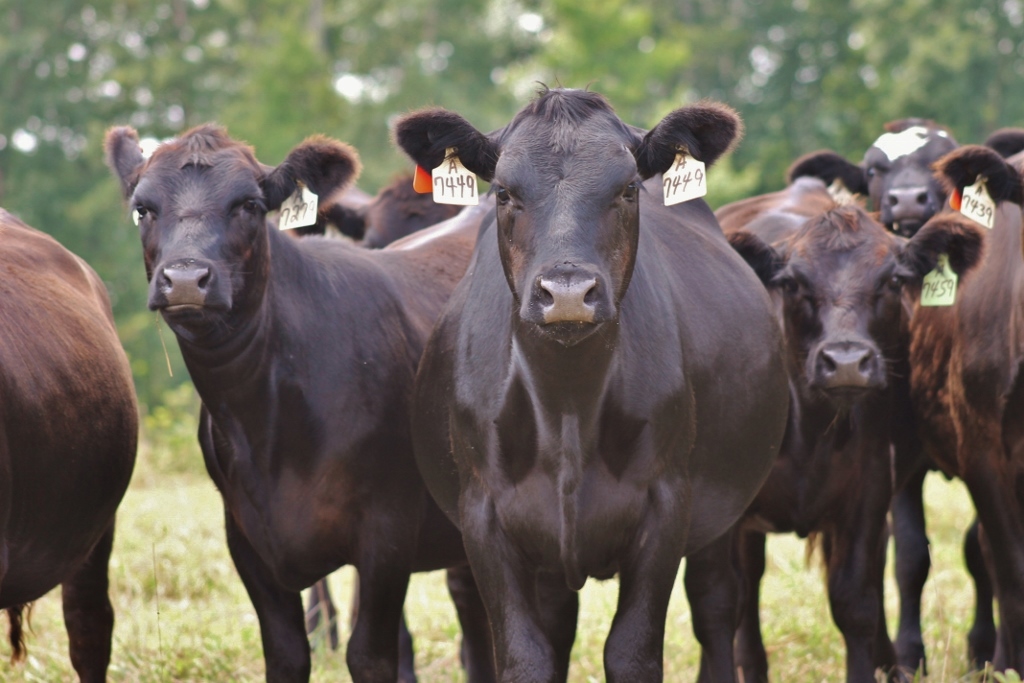We previously featured the Richlands Farm with a focus on the dairy operation. Click here to read the story.
The pumpkin patch is a new addition to the farm this year, along with the two-acre corn maze. Both will be used in the farm’s lineup of weekend fall events, starting with the Family Farm Day kickoff tour on October 4th and ending with a Zombie Maze Run and Haunted Maze.
Like many farms in the area, Richlands Dairy Farm has been a family-run, conventional dairy operation for years. However, the family has taken a leap into the growing world of agritourism. The fall festivities, most notably the Family Farm Day tour, bring consumers onto the farm to learn about agriculture directly from the people who produce food. In a world where most people learn about farming from television or the internet, the Jones family finds this venue for real-world education invaluable.
The Family Farm Day on October 4th will be a prime opportunity for visitors to see the milking parlor, learn how dairy cows live on a day-to-day basis, and help the dairy feed their baby calves. Throughout the rest of October when the pumpkin patch, petting zoo, hay rides, and corn maze are open, visitors will get a view of the crops, cows, and pastures that sustain the family operation.
“Agritourism,” the formal name coined for this type of endeavor, helps operations like the Jones’ dairy to diversify their farm income stream. An estimated 500 farms in Virginia engage in agritourism, and although many rely on traditional methods—pumpkin patches, corn mazes, you-pick, wagon rides, and petting zoos—many new agritourism efforts utilize out-of-the box options like wine tastings, movie screenings, farm chore experiences, and crop harvesting parties.
A recent state-wide study of agritourism across the state found that most operations are concentrated along route 81, and that proximity to consumers plays an important role in the viability of these operations. Although there are relatively few agritourism opportunities in Southside Virginia, Richlands Dairy is well-situated for the new fall endeavor because it is located near a major metropolitan area and is a highly-visible fixture along route 460, thanks to the recognizable cow-shaped farm sign next to the road.
Like other brand-new agritourism ventures, the fall functions at the Jones’ farm have required extra planning, time, and resources. The corn maze was challenging to design from the ground and the pumpkins required special management for pests and diseases. The family is still working to set up their corn pit and petting zoo for visiting children and finalizing plans for a concession stand. All in all, the Jones family is not sure exactly what to expect on opening day. Nonetheless, they are excited about the way things are coming along, and according to Brittany Jones, a love of all things fall-related helped inspire the pumpkin patch idea in the first place. With a little luck, lots of planning, and some beautiful fall weather on the way, the hard work spent creating something brand-new at Richlands Dairy Farm will pay off when visitors step foot on the farm and join the family for some fun this October.
Additional Resources for Readers
Richlands Farm Website and details on their Fall Farm Festival and Richlands Dairy Farm Facebook Page
Overview of Agritourism in Virginia
Specialty Crop Profile: Pumpkins

































